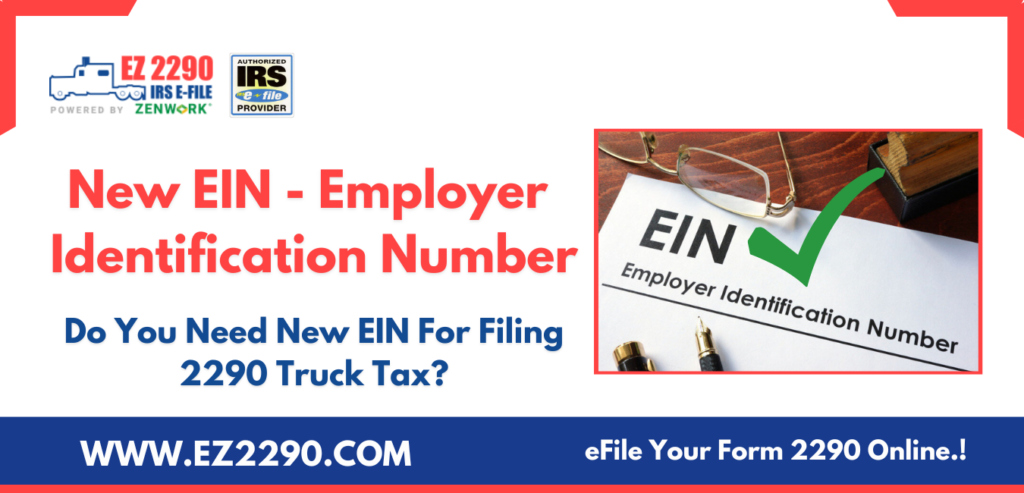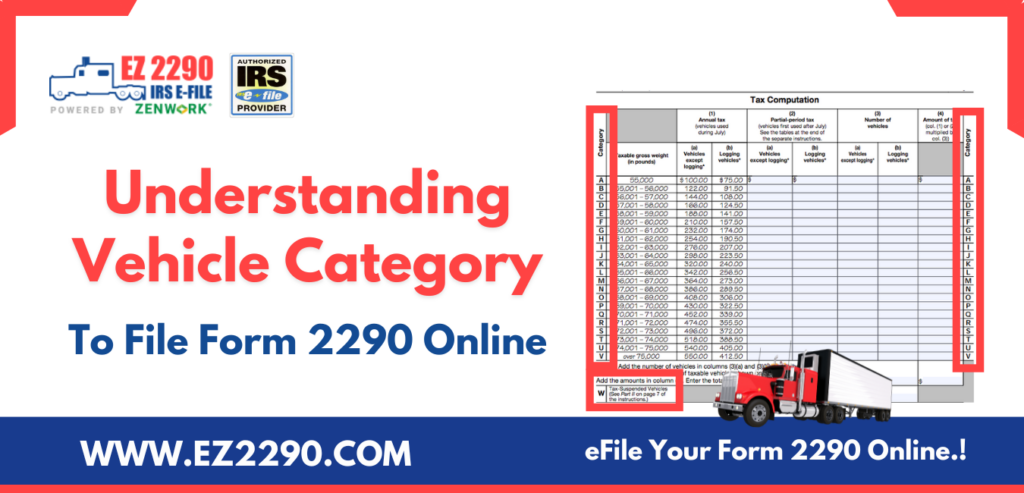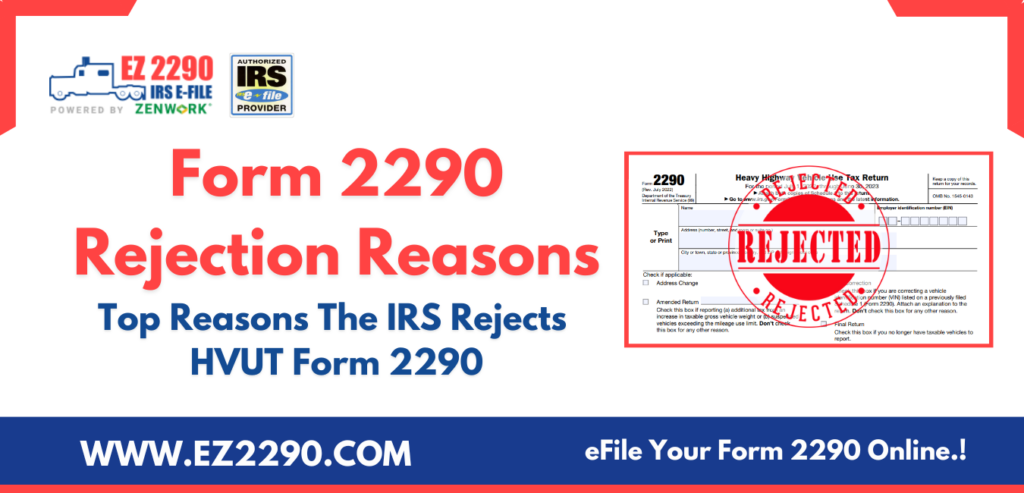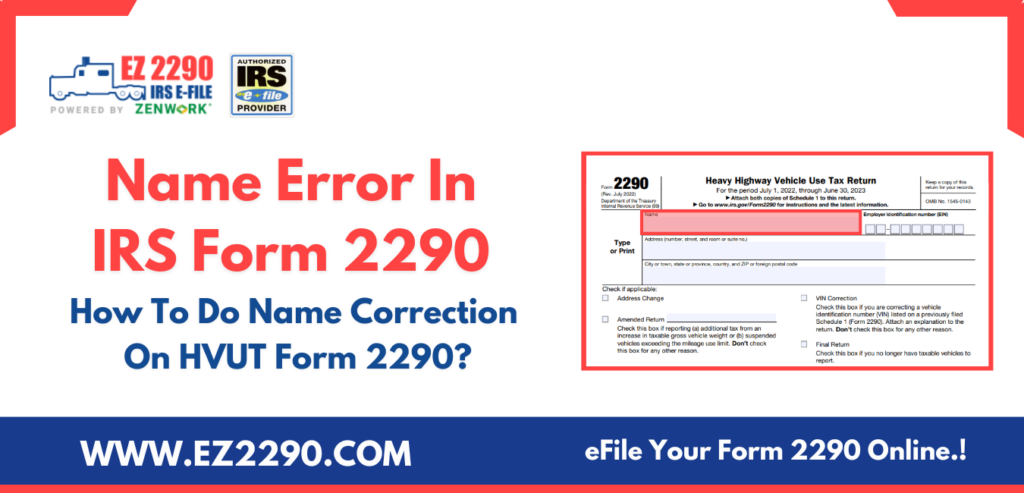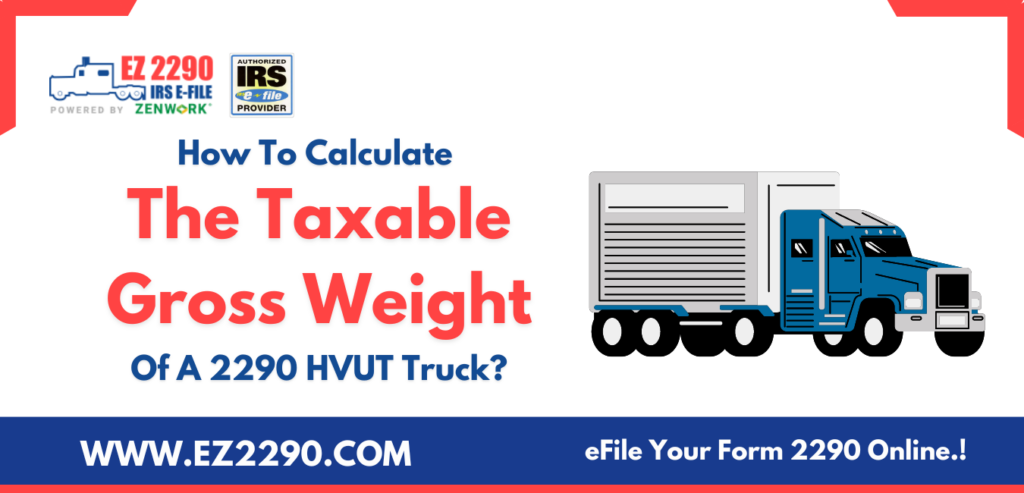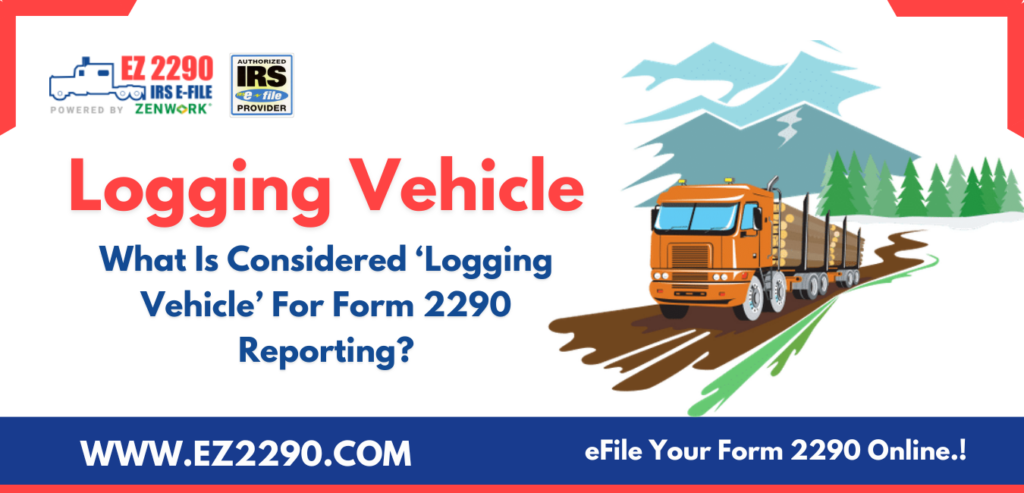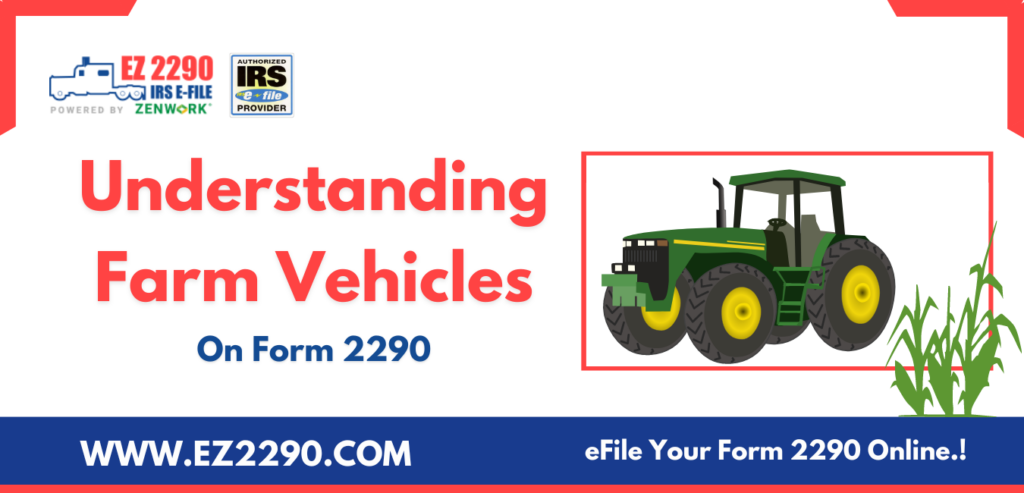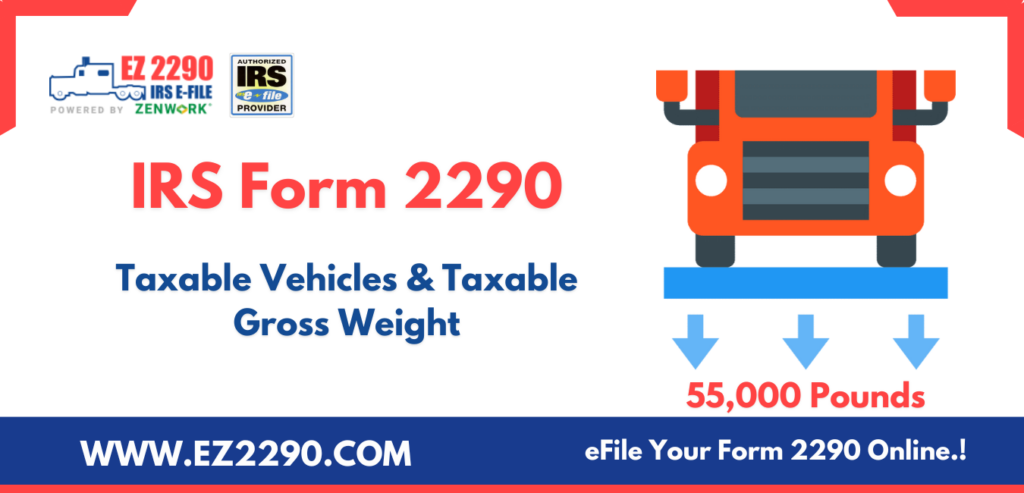
Defining and understanding the taxable vehicles and taxable gross weight of vehicles in HVUT Form 2290 reporting.
As years pass by, thousands of businesses are educating themselves on the importance of compliance.
Times have changed.
Compliance is something that is no longer debatable.
Trucking businesses understand the perks of staying in the good books of the DOT and the IRS.
This is because of the common understanding that compliance = uninterrupted business.
As a result, tens of thousands of trucking companies, owner-operators, and fleet owners are filing their HVUT 2290 forms with the IRS.
And why not?
Filing HVUT 2290 returns help communicate specific vehicle information to the IRS.
This information is further used to validate and hold a business accountable to certain regulatory protocols and compliance assessments, keeping the trucking ecosystem in check.
The focus of our discussion will primarily be on the fundamentals of HVUT or Heavy Highway Vehicle Usage Tax.
So, we will be addressing questions, such as:
Why do trucking businesses need to file HVUT 2290 returns?
What are the fundamental driving factors that qualify certain vehicles as “taxable”?
What kind of vehicles are taxable according to the HVUT 2290 reporting instructions?
What is the taxable gross weight of a vehicle?
And more.
So, let’s get to it.
Understanding the logic: HVUT taxes
HVUT or Heavy Highway Vehicle Usage Tax is a federal excise tax imposed on qualified vehicles that operate on federal highways.
HVUT vehicles can be trucks, semi-trucks, and combination vehicles that meet certain parameters, enabling them to function or operate on highways.
The IRS imposes this tax on the owner of the vehicle. Regardless of the number of owners, the vehicle owner(s) need to file the HVUT Form 2290 and pay the HVUT tax due on the vehicles.
The funds collected through HVUT tax regulations are used for a variety of federal transportation infrastructure, including but not limited to:
- Highway repair and maintenance
- Safety training programs
- Bridge maintenance
- Accident prevention programs
And more.
HVUT tax is imposed on qualified highway vehicles because they tend to operate on the highways, resulting in:
- Higher utilization of the federal highways.
- Wear and tear.
- Gradual deterioration of the roads.
The fact that HVUT is one of the most significant sources of the FHWA, can’t be ignored.
We must also consider other initiatives the Federal Highway Administration undertakes to provide a better driving experience to heavy vehicles, including safety signage, lane allotment, accident prevention measures, and safety programs.
So, when a trucking company fails to comply and skips paying the HVUT tax, the business is basically disregarding the tax filing and payment protocols, which would indirectly have an impact on the FHWA funds.
As a result, the business would be required to pay penalties and receive prohibition notices from the DMV or DOT, making it difficult for the business to operate smoothly.
This is why trucking businesses are advised to follow the HVUT tax information reporting, filing, and payment regimes; to prevent trouble with the federal agencies.
So, if you own a trucking company, it’s wise to pay attention to your HVUT tax filings and pay your taxes on time if not earlier.
Let’s look at the key aspects that define the HVUT vehicles as follows.
What are HVUT 2290 vehicles?
Vehicles that qualify for the HVUT taxes are known as HVUT vehicles or 2290 vehicles. The tax paid by the business or the owner of the vehicle is directly related to certain parameters of the vehicle, including its weight, month of first use, and mileage utility.
This is why vehicles that qualify for HVUT taxes are known as HVUT vehicles.
What is the taxable gross weight of the vehicle?
The taxable gross weight of a vehicle is the unloaded or “empty” weight before any goods are loaded into the vehicle.
This weight should include the weight of all the essential components and parts of the vehicle that are critical for the optimal functioning of the vehicle on the highways.
The weight of the engine, battery, axles, flat beds, exteriors, and all other components of the vehicle that help the vehicle operate on the road without interruptions, must be considered in the vehicle’s taxable gross weight.
The loading weight must be separated from the gross weight of the vehicle, which gives you the “taxable” gross weight of the vehicle.
Businesses can use CAT Scales to measure and validate the weight of the vehicles.
If the empty weight of your vehicle is 57,000 pounds before you load the shipments, then that’s the taxable gross weight of your vehicle
It’s essential to note that vehicles that weigh 55,000 pounds or more qualify for HVUT taxes.
What kind of vehicles are taxed under HVUT tax rules?
All kinds of vehicles that weigh 55,000 pounds or more that utilize the federal highways for transportation or commerce are taxed under the HVUT tax rules.
Agricultural vehicles, non-agricultural vehicles, logging vehicles, non-logging vehicles, commercial vehicles, and other qualified highway vehicles are taxed under the HVUT regime.
Agricultural vehicles are suspended from HVUT until they exceed the 7500-mile limit.
Non-agricultural vehicles are suspended from HVUT until they exceed the 5000-mile limit.
When the mileage use limit exceeds, vehicle owners must make a note of the month in which the limit was exceeded and report the same on Form 2290.
The vehicle will be taxed appropriately thereafter.
How to report the taxable gross weight of qualified vehicles on the 2290 form?
When reporting with Form 2290, it’s important to validate the information to maintain reporting accuracy.
Details like vehicle identification number (VIN), logging status of the vehicle, month of first use, mileage use limit, EIN and legal name of your business, and other information, is essential to report your HVUT tax information.
In the “tax computation” section of Form 2290, you will see that the IRS categorizes vehicle weight ranges.
Select the weight range of your vehicles, and enter the number of vehicles you own along with the logging status of the vehicle.
A standard vehicle that has a gross taxable weight of 55,000 pounds is taxed at $100.
For every 1000 pounds the vehicle adds to its gross taxable weight, an additional $22 is added to the HVUT tax.
Take a look at the tax computation section as taken from the IRS 2290 HVUT form.
How to eFile HVUT Form 2290 online?
Report qualified vehicles on HVUT Form 2290 and file the IRS Form 2290 online with an IRS-authorized eFile provider like EZ2290.
EZ2290 offers:
- Quick and easy bulk data import
- Dynamic form completion
- Automatic HVUT tax calculations
- Secure & encrypted eFile transmissions
- Free 2290 VIN Corrections
- Free Re-files for rejected returns
- Online options to pay your HVUT with convenience
- Priority 2290 tax support
And much more.
10,000+ trucking businesses eFile their HVUT 2290 forms with EZ2290 confidently.
Sign Up For Free & eFile Form 2290 Now
Other Useful Posts From Ez2290 Blog
- New EIN: Do You Need New EIN For Filing 2290 Truck Tax?
- Understanding Vehicle Category To File Form 2290 Online
- Here Are 4 Mistakes You’ve Got To Avoid On Your 2290 Forms
- 2290 Rejection Reasons – Top Reasons The IRS Rejects HVUT Form 2290
- IRS 2290 HVUT Payments: Various Ways You Can Pay Your 2290 Tax Online With EZ2290
